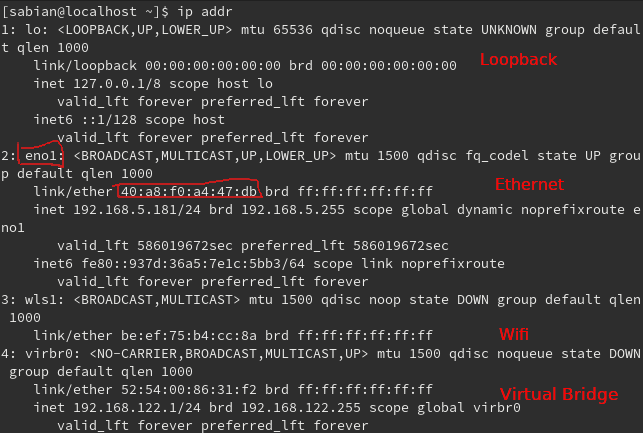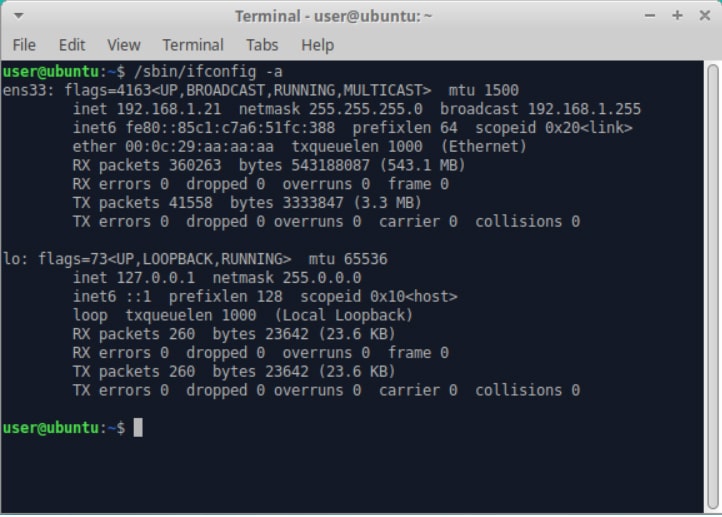

- #Where is the ifcfg 0etho in linux on a mac driver#
- #Where is the ifcfg 0etho in linux on a mac mac#
Verify the bonding interface is up and the ip is configured properly. Restart Network Service and Verify BondingĪfter setting up the bonding, restart the network service: rcnetwork restart Note: You may choose to ignore options if you already included it in the /etc/sysconfig/network/ifcfg-bond0 file.
#Where is the ifcfg 0etho in linux on a mac driver#
Edit nf FileĮdit the file /etc/nf and add the below 2 lines to include bonding driver with options. NAME='82545EM Gigabit Ethernet Controller (Copper)' 3. NAME='82545EM Gigabit Ethernet Controller (Copper)' The output should be similar to the following: # cat ifcfg-eth0 Modify the slave interfaces so that it does not have the IP address, Netmask. # cd /etc/sysconfig/networkīONDING_MODULE_OPTS='mode=active-backup miimon=100' In the following example, I have used active-backup mode for bonding which means only the active interfaces handles the communication traffic and failure in which the backup interface start to work. Create ifcfg-bond0 under /etc/sysconfig/network and define the IP address and slave interfaces that can be used. If you still do not see the link then the interface is not connected to the switch. Try to bring up the interface using “ifconfig up”.

If the Speed, duplex & Link status is unknown then the interface may be in down status. Verify the active interfaces using the following command: ethtool eth0 | egrep "Speed|Duplex|Link"

To configure bonding on latest version of SuSE, you can either use YaST or alternatively you can modify the system files as shown below: You can perform the test by bringing down one interface, seeing that other interface will be active one and vice-versa. # cat /proc/net/bonding/bond0Įthernet Channel Bonding Driver: v3.6.0 (September 26, 2009)īonding Mode: fault-tolerance (active-backup) The following indicates that the current bonding mode is fault-tolerance. Verify the bonding status as shown below. Restart the network services: service network restart Restart Network Service and Verify Bonding Create nf FileĬreate the nf file with the following content.Īlias netdev-bond0 bonding 4. Make sure you have MASTER and SLAVE parameters defined as shown below. Modify ifcfg-eth0 and ifcfg-eth1 FilesĮdit the network interface files for eth0 & eth1 to reflect entries similar to the following. # cd /etc/sysconfig/network-scriptsīONDING_OPTS="mode=1 miimon=100" 2. Verify the link status of the interfaces using the command “ethtool ”Ĭreate a file ifcfg-bond0 with the below values and replace with correct IP, NETMASK and the appropriate bonding mode ( mode 0, 1 ,2 …) like the below. Create ifcfg-bond0 FileĪll the network configuration scripts are located under /etc/sysconfig/network-scripts in RHEL. The receive load balancing is done through ARP negotiation.Ĭonfigure Bonding in Redhat or CentOS 1. In this, the incoming traffic is handled to use load balancing across all the slaves.

#Where is the ifcfg 0etho in linux on a mac mac#
If the current slave fails, then another slave takes over the incoming traffic based on MAC address. Incoming traffic is received by the current slave. The outgoing traffic is distributed based on the current load on each slave.


 0 kommentar(er)
0 kommentar(er)
